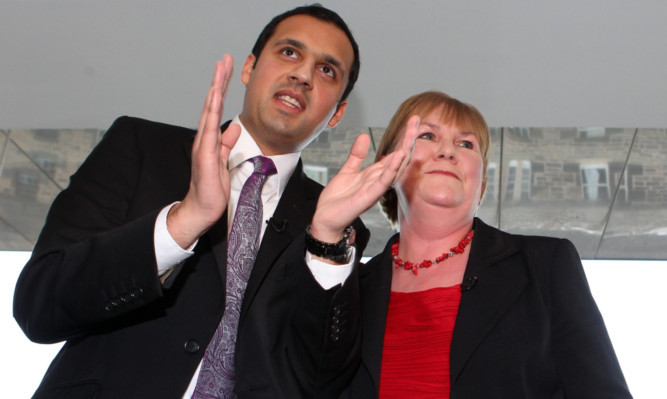
It sounds a bit like a trade union rallying cry but the United with Labour campaign against independence will get under way tomorrow.
Scottish Labour’s referendum campaign launch will take place in the impressive setting of the Emirates Arena in Glasgow.
The symbolism is not too subtle. The Commonwealth Games venue is a sign of the regeneration which the city’s East End is undergoing.
But the sports arena sits in an SNP Holyrood seat in what was a traditional Labour-voting heartland.
Leader Johann Lamont and deputy Anas Sarwar will use the event to set out the “Labour values” behind the party’s case for Scotland staying within the UK.
Former prime minister Gordon Brown is also expected to speak in what is the first major foray into the referendum battle from Labour in its own right, independent of the Better Together alliance.
Campaign co-ordinator Mr Sarwar will claim it is vital to have “strong Labour voices speaking for the majority of Scots who believe we are better working together with our neighbours in the UK.”
And the Glasgow Central MP will also reveal plans to contact around one in five households across Scotland in the next three months to put forward his party’s case.
This is a crucial detail as it exposes one of the biggest challenges facing Labour the “Bank That Likes to Say Yes” otherwise known as Euromillions winners Colin and Chris Weir. The couple from Largs have already handed the SNP more than £1 million and have made clear there is plenty more to come to help the Nationalists’ independence drive.
Labour, in contrast, does not boast such wealthy backers and will be forced to conduct more modest campaigning, mindful that they will also have to drum up a war chest for the three elections in as many years coming up.
Instead, the party will need to try to make its message count.
The SNP and Yes Scotland talk up the positivity of their campaign not that the rhetoric is always matched by their actions but it does hold an important lesson for Labour. If voters get a whiff that the party’s campaign is born out of its often obsessional loathing of the SNP rather than what is right for Scotland, they will run a mile.
The tribalism and pettiness which sometimes stains the party’s efforts in Holyrood will need to be replaced with a more relaxed confidence in the case for the union.
It is an issue United with Labour leader Mr Sarwar nailed recently in an interview when he said the party’s campaign will be “about taking the hate out and actually focusing on the issues that matter and saying that essentially, we all love our country, we just have a different vision about what is in the best interests of our future.”
This is where the rest of Labour’s Westminster ranks will also come into play. Despite the best efforts of the opposition to make it all about Alex Salmond, the SNP managed to successfully sell the qualities of its team of ministers to voters in the party’s historic election victory of 2011.
It’s a tactic which could work if Labour can coordinate the efforts of its biggest hitters, the likes of an on-form Gordon Brown, Douglas Alexander and Jim Murphy.
It doesn’t really matter if they don’t actually get on some of the SNP’s team of cabinet secretaries are barely on speaking terms it is about the complement of skills and credibility they put across together. And best of all, for a cash-strapped Labour campaign, deploying well-kent faces who voters trust is a relatively cheap way of campaigning. Tomorrow’s event will see Labour tight-lipped on its vision for more powers for Holyrood, but the party will not be able to duck the issue of “what next” for the sizeable chunk of referendum voters known as the “persuadables”.
One of Scotland’s most successful entrepreneurs Sir Tom Hunter last week put himself in that category with a wise warning: “On the independence side, they need to start coming out with some hard facts to hard questions, and on the
Better Together side I would say, ‘tell me why we’re better together, not why we shouldn’t be independent’, because we’re a pretty stubborn race and if someone keeps telling you you can’t do that and you can’t do this we might just say, well, yes we can.”
It is a point which Labour can’t afford to ignore if they want United with Labour to succeed and be a springboard into the 2016 Holyrood elections.

Enjoy the convenience of having The Sunday Post delivered as a digital ePaper straight to your smartphone, tablet or computer.
Subscribe for only £5.49 a month and enjoy all the benefits of the printed paper as a digital replica.
Subscribe